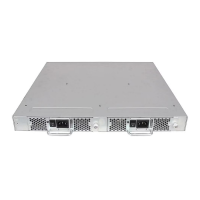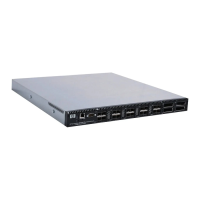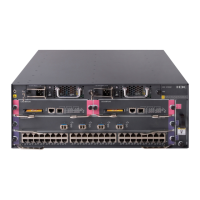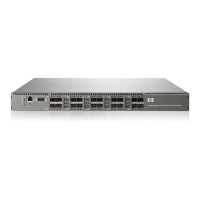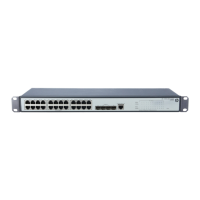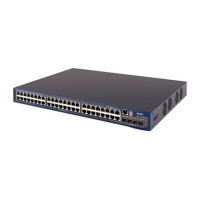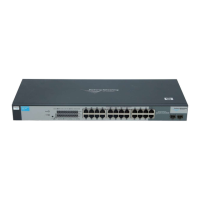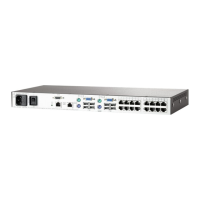528 Fabric OS Administrator’s Guide
53-1002446-01
Preparing the switch for FIPS
C
• Disable in-flight encryption.
• Disable IPsec for Ethernet and IPsec for FCIP.
• Disable in-band management.
• Disable root access.
• Enable the KATs and the conditional tests.
• Enable FIPS.
Enabling FIPS mode
1. Log in to the switch using an account with securityadmin permissions.
2. Enter the sshutil delpubkeys and sshutil delprivkey commands to remove legacy OpenSSH DSA
keys.
These keys, which were previously the default, do migrate to Fabric OS v7.0.0 but are no longer
supported in FIPS mode. You must remove them to remain FIPS compliant.
Support for RSA keys is retained. You can implement RSA keys using the sshutil command.
3. Optional: Select the appropriate authentication method based on your needs:
• If the switch is set for RADIUS, enter the aaaConfig --change or aaaConfig --remove
command to modify each server to use only PEAP-MS-CHAPv2 as the authentication
protocol.
The RADIUS server must also be configured to use only PEAP-MS-CHAPv2. Note that
among the Windows RADIUS servers supported, only Windows 2000- and Windows
2003-based RADIUS servers may be used in a FIPS-compliant configuration.
• If the switch is set for LDAP, refer to the instructions in “Setting up LDAP for FIPS mode” on
page 524.
4. Optional: Set the authentication protocols.
a. Enter the authUtil
--set -h sha1 command to set the hash type for MD5, which is used in
the DHCHAP and FCAP authentication protocols.
b. Enter the authUtil
--set -g n command (where n represents the DH group) to set the DH
group to 1, 2, 3, or 4.
5. Install the LDAP CA certificate on the switch and Microsoft Active Directory server. Refer to
“LDAP certificates for FIPS mode” on page 526.
6. Enter the ipFilter
--show command and verify that no active IP filter policy permits access to
telnet, HTTP, or RPC ports, even if a higher priority policy explicitly denies such access. If an
active IP policy does permit any of these ports, you must modify or deactivate the policy. Create
separate policies for ipv4 and ipv6, and block access on Telnet, HTTP, and RPC ports.
a. Enter the ipFilter command to create IP Filter policies for IPv4 and IPv6. Refer to “Creating
an IP Filter policy” on page 153.
b. Add rules to each IP Filter policy, see “Adding a rule to an IP Filter policy” on page 159. You
can use the following modifications to the rule to block access to telnet, HTTP, and RPC
ports:
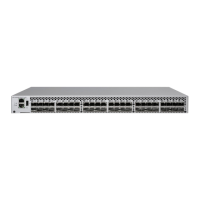
